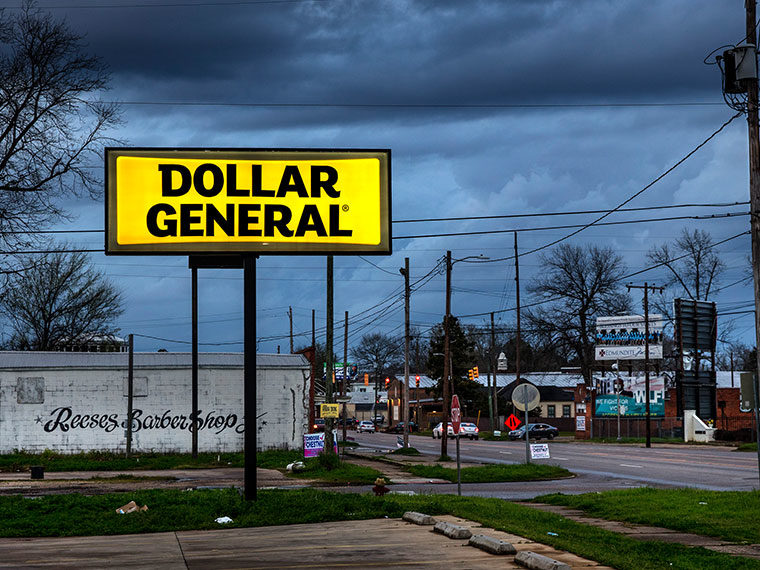A look at the shape of five variables through the last seven downturns vs. today’s numbers
The Federal Reserve’s rapid interest-rate increases seem increasingly likely to cause a U.S. recession — unless the Fed gets really lucky and pulls off a soft landing — we just don’t know when. If recession comes, some small number of economists, in hindsight, will have perfectly predicted the onset of the downturn, and, during their victory laps, they’ll hopefully share the precise formula of economic indicators and other factors they used to nail it.
If only we didn’t have to wait.
UCLA Anderson’s Ed Leamer believes we could both simplify and improve recession forecasting by looking at the shape of numbers — how a handful of widely followed economic indicators looked, when graphed, going into the last seven recessions — and where on that curve the indicators might be today.
Leamer, in a working paper published by the National Bureau of Economic Research, plotted each variable over the 36 months ahead of the past seven recessions onto one figure. He then added 12 months of recent data, using a statistical algorithm to position it probabilistically where the current trend most matched the historic trend.
Having seven recessions plotted onto one figure “allows us literally to see the symptoms of an oncoming recession in the year before recession, in contrast with the two years earlier,” Leamer writes. Along with the graphs, Leamer gives his take on how economists think about movement in these key indicators and offers explanations of the unprecedented quirks in today’s economy that make some data points less predictive than others. (The 1973 and 1980 recessions are labeled for the Fed chiefs who presided over them, Arthur Brns and Paul Volcker.)
The (Distressing) Inflation Rate
If a high rate of inflation is a key indicator of coming recession, the U.S. has rarely been so poised to enter one. Prices have risen at the fastest rate in more than 40 years. The red line on the chart above shows the recent inflation trend similar to trends mere months before past recessions.
Rising inflation alone doesn’t cause recession, Leamer explains, but it’s a good indicator that the Fed might trigger one. Aggressive, repeated rate hikes that the Fed uses to fight inflation do cause recessions.
In the late 1970s, Volcker famously ended a brutal decade of wild inflation by quickly pushing a key short-term interest rate to nearly 20% — an unprecedented high in U.S. history by a large margin — with little deference to the predictable job losses ahead. Hugely unpopular at the time, Volcker has since become revered by many economists for righting a long-suffering economy when other leaders failed. His rate hikes kicked off a six-month recession in 1980, as well as a second one between July 1981 and November 1982 that included 10.2% unemployment. A decade of economic and job growth to near full employment followed those downturns.
Today’s Fed Chair Jerome Powell is a huge fan of Volcker, and he has repeatedly promised similarly aggressive rate hikes if needed to bring inflation down to 2%. But there’s much debate about whether such strong medicine is necessary to get prices under control this time — or just how far he would go.
Shortages caused by supply chain issues are huge contributors to this year’s price increases. As the effects of those issues wear off — businesses find alternative sources, COVID-19 restrictions ease or fighting in Ukraine ceases, for example — prices could fall enough to make further dramatic tightening from the Fed unnecessary, Leamer says.
The (Problematic) Employment Figures
In normal times, job figures like the U.S. has reported lately would shut down warnings about recession. Recessionary economies don’t usually run declining unemployment rates or add hundreds of thousands of jobs month after month.
Yet in the first half of 2022, the U.S. did report two consecutive quarters of declining GDP, which is a crude definition of recession. (Recession isn’t official until NBER’s Business Cycle Dating Committee declares it so, sometimes many months after it starts. The committee uses a lot more than gross domestic product data to make that call.)
Like many economists, Leamer believes today’s jobs data is too skewed by unusual circumstances to be trusted in traditional forecasting models. Employers laid off some 22 million workers during the early months of the pandemic, sending the unemployment rate to nearly 15%. Congress authorized unprecedented emergency unemployment benefits. Although workers are returning to jobs as industries rebound, that’s not the whole picture. “There are lots of people who are still sitting on the sidelines,” he says.
Those quirks produce a three-year trend in unemployment “on a path never seen before,” Leamer says. (These data are in the unemployment display with diamond markers while the data with COVID-19 periods removed are with triangular markers.) “Unemployment as we know it now is not necessarily the same as the unemployment that occurred prior to COVID-19.”
To sidestep the anomalies, Leamer stripped out the data between February 2020 and February 2022 in his plot of the most recent unemployment rate and replaced it with data from the months prior to the pandemic. Doing so (see triangular markers in chart) creates an alarming current flat trend in unemployment that mimics past expansions shortly ahead of imminent recessions.
However, he’s not convinced that this hypothetical history is reliable for forecasting. The manipulation, he notes, begs the question: “If COVID-19 leads you to omit 12 months of data for unemployment, why not (omit it for) the other variables?”
The (Alarming) Yield Curve
The yield curve, or the spread between short- and long-term interest rates, is a venerated indicator for recession forecasting. By mid-August, the trend in that spread looked a lot like those seen barely a year before previous recessions, Leamer noted in a phone conversation.
Consider the chart above showing the spread between the yield on three-month and 10-year Treasuries before past downturns. Each colored line represents the 36-month course of a single expansive economic period ending in a recession. The yellow line, for example, shows the three-year trend before the 1980 recession. The brown line represents the mean. Every line ends in recession, regardless of the year it started.
Now the red line, which shows the 12-month yield curve to August. That sharp decline to near zero loosely follows the trend seen around 11 months before other recessions.
For today’s circumstances, Leamer considers the slope of the yield curve to be the most predictive, as well as the most alarming, indicator for recession of the five included here.
Extremely low or negative yield is a huge red flag for impending recession, largely because a narrowing gap between short- and long-term rates means decreasing profits for lenders, he explains. During such periods, banks tighten lending standards for both businesses and consumers, which reduces lending and associated economic activity. In the housing market, he says, stricter lending standards cause more dramatic drops in home sales than do high interest rates. When the yield curve is inverted — long-term money is cheaper to get than short-term money, turning normal risk calculations on their head — big purchases generally are duly suppressed.
Economic pundits like to note that all U.S. recessions in the past 60 years have been preceded by an inverted yield curve. Yield curves briefly inverted on occasion this summer. Leamer’s series suggests prolonged periods of inversion aren’t necessary to help trigger recession. He says the important message in that historic data “is that the Fed would be wise if they avoided slopes less than 0.75 if they want to avoid a recession.”
The (Distracting) Three-Month Treasury Yields
Economic forecasters closely watch actual yields on short-term bonds, not just spreads. Three-month Treasury yields have risen sharply this year as the Fed promised repeated rate hike rates if necessary to tame inflation. The trend to August is strikingly similar to the one during Volcker’s term as Fed chair in the late 1970s, just before his aggressive interest rate hikes triggered a 16-month recession. But Volcker was at 12% in the last month of the expansion, while in August we were at only 2.6%
These rates are chosen by the Fed, and the average rates march upward across all three years before recessions. The news in this figure is that the Fed changes its mind and starts to cut rates about six months before recessions. It’s a rate reduction, not a rate increase, that reveals the Fed’s recession prediction.
The (Damaged) Housing Sector
Leamer has published numerous studies on the importance of watching housing data for forecasting recessions. This time, he’s more cautious about relying on residential investment as a predictor.
His historical series of housing starts before past recessions show large declines beginning within a year or two before each downturn. Sharp drops in housing starts in May and June this summer were offset with a rise in August. It’s too soon to tell what this means.
Leamer is doubtful that those figures foreshadow an impending collapse in the housing market. Unlike past cycles, there has been no building boom in housing in years prior or loose mortgage standards that encouraged homebuying by those who couldn’t afford it.
In fact, there’s been a chronic housing shortage for more than a decade. While stricter lending standards and higher interest rates will discourage some buying, he says, there’s still not nearly enough inventory on the market to fulfill demand. “We are not overbuilt by any definition.”
The (Fluid) Conclusions
Historically, not many economists have predicted the recessions that we have experienced. The recent profusion of recession predictions popping up in the news might therefore, to an informed skeptic, be interpreted to mean that there will be no recession soon. Leamer started this project out of frustration. Some headline forecasts don’t seem to be based on serious analysis, he says. More formal forecasts are usually derived through probit models that have, in Leamer’s assessment, underappreciated limitations. “Even an audience of statisticians or econometricians who are familiar with the word ‘probit’ may not really understand what all the assumptions are that lie behind that,” he says.
The images of historic series reveals some of the factors behind the recession forecasts, as Leamer set out to do. But this approach, too, has limitations, he says. It can generate a forecast based on yield curve, or inflation, or housing starts, for example, but it does not combine and weight those pieces of evidence to reveal a probability of recession based on all of it. It takes a probit model for that.
When Leamer was working with data to May 2022, he came to the general conclusion that recession within the next 12 months was highly unlikely. But more recent data, which include repercussions of three more Fed rate hikes, led him to believe the downturn is closer than he thought in May.
Like many economists, he doesn’t think it’s possible the Fed can get inflation under control without a lot of painful job losses, particularly among lower-income earners. “Inflation is terrible, for sure, and I don’t mean to diminish it,” he says. “But I think recession is going to be much worse.”
Featured Faculty
-
Edward E. Leamer
Director, UCLA Anderson Forecast; Chauncey J. Medberry Chair in Management; Distinguished Professor Emeritus of Global Economics and Management
About the Research
Leamer, E. E. (2022). A New Way of Forecasting Recessions. doi 10.3386/w30247
Leamer, E. E. (2007). Housing IS the Business Cycle. doi 10.3386/w13428
Leamer, E. E. (2015). Housing Really Is the Business Cycle: What Survives the Lessons of 2008–09? Journal of Money, Credit and Banking, 47(S1), 43-50. https://doi.org/10.1111/jmcb.12189






